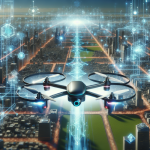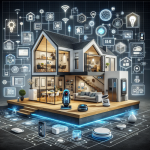
The Future of AI-Driven Smart Homes
AI-Driven Smart Homes: Transforming Living Spaces
In recent years, AI technologies have started to redefine the concept of smart homes. By integrating AI into home devices, residences are becoming more than just buildings—they are morphing into intelligent entities that respond to our needs intuitively. In this article, we explore the transformative potential of AI-driven smart homes.
Prerequisites for an AI Smart Home
- A stable and fast internet connection.
- Smart home devices compatible with AI technologies.
- Basic knowledge of IoT technologies.
Step-by-Step Guide to Creating an AI Smart Home
1. Choosing the Right Platform
There are several AI platforms and ecosystems, including Apple’s HomeKit, Google’s Nest, and Amazon’s Alexa. Each platform offers a unique set of features for connecting and controlling devices. Choosing the right platform is crucial, especially when considering compatibility and scalability. For details on maximizing device performance, see our previous post on benchmarking AI models.
2. Integrating IoT Devices
Each IoT device communicates with the central AI system, allowing for seamless automation and data analysis. From lights to thermostats, cameras to doorbells, every connected device contributes to the home’s intelligence. It’s essential to ensure that these devices are secure and up-to-date, which you can explore further in our article on IoT security tools.
3. Implementing AI Algorithms
AI algorithms can analyze data collected by smart home devices to predict users’ needs and preferences. Machine learning models can adapt based on interactions and environmental changes, improving the overall efficiency of home management.
Benefits of AI-Driven Smart Homes
The incorporation of AI into smart homes offers numerous advantages, such as increased energy efficiency, enhanced security, and comfort. AI systems optimize electricity usage, manage devices based on occupancy, and monitor unusual activities.
Troubleshooting Common Issues
Even with a robust AI setup, homeowners may face challenges such as connectivity issues, device malfunctions, or security concerns. Regular software updates and maintenance can alleviate many of these issues, and it’s always recommended to have a support plan from the device manufacturer.
Summary
- Assess your current home setup and ensure compatibility with AI technologies.
- Select an appropriate AI platform, considering future expansion and integration.
- Secure and configure IoT devices to create a cohesive smart home ecosystem.
- Regularly update systems to maintain efficiency and security.
Final Thoughts
The future of living is inevitably intelligent and interconnected. By embracing AI-driven smart homes, we’re not just investing in devices but we’re upgrading our quality of life, ensuring convenience, efficiency, and sustainability.














